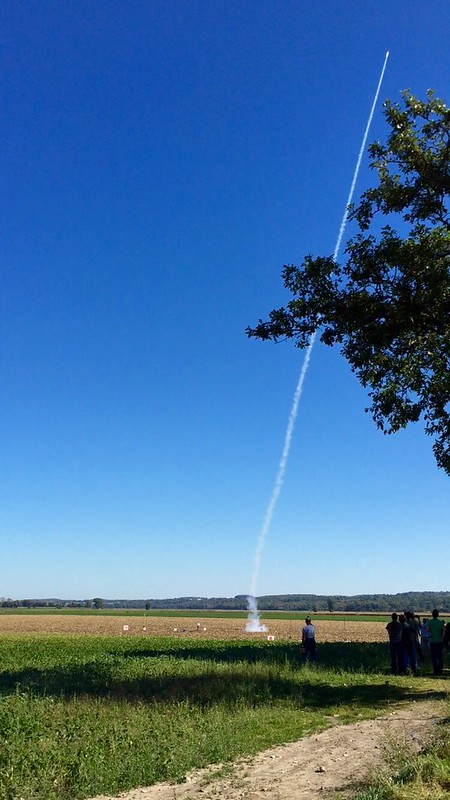It flew today at URRG..... Everything was recovered intact and it flew stable

And WOW it was fast!!
Going through data now, and preliminary analysis shows that the CTI I540 was more like an I700 it maxed out the XTRA's 105g accelerometer so the velocity data may not be as accurate as I hoped. Right now seems like Mach ~1.85.
It hooked a right out of the tower, and continued arrow straight until the motor burned out. About 1/2 sec in there was a loud pop, though deeper, and a puff of smoke in the smoke trial. The thrustcurve generated from the accelerometers confirms this strange event - 650 N off the pad, rising to 800 N at 1/4 sec, then falling to 700 at 1/2 sec in, then abruptly dropping to ~60 N at 0.6 sec and maintaing that for about 1/2 sec for a total of ~1.05 sec burn. Nothing like the nice even 1 sec ~550 N burn that is published for the I540. Also, I calculated the total mpulse from the thrustcurve I created and it was only around 475 N-s.
Any ideas what caused this? Should I have glued the grains in?
Additionally, despite having set it to ignore the pressure sensor on ascent, the accel data shows the XTRA fires the apogee charge after only 9 seconds of coast at ~380mph. Because of this it only reached around ~9,500 feet. Looking at the sims it should have coasted for around 20 seconds, and at 9 secs of coast it shows the rocket around 10,000 ft, so if it had continued up I think it would have easily reached 11-12,000'.
Overall though, I am very happy. It flew great, and was successfully recoverd intact - and that's all that really matters in the end! Also, I got to see some awesome flights by others with motors much larger than I've ever seen before in person, so that made the 5 hour drive well worth it as well! Pictures, video and data to come in the next few days, I've got a lot!














